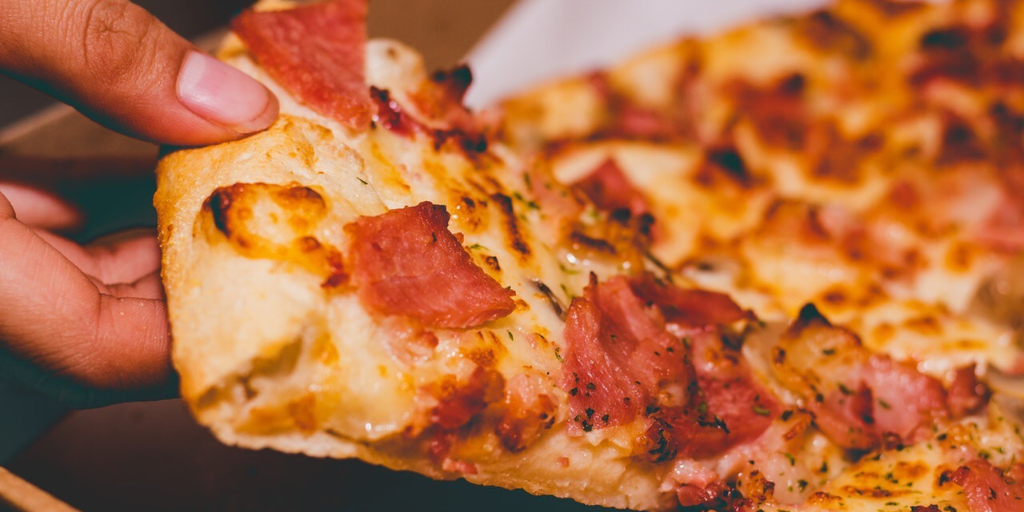Domino’s pizza plans an unlikely expansion—plus, the phrasal verb “win over”
Hi everyone, I’m Jeff, thanks for joining us for episode 229. JR is the producer, as always, and you can find all the episode resources at PlainEnglish.com/229.
Coming up today: One Italian man says it’s like trying to sell sand at the beach—but Domino’s pizza is moving into Italy anyway. The American pizza chain hopes to open 800 locations in the country that gave the world pizza centuries ago. Plus, we’ll talk about the phrasal verb “win over” and we have a song of the week. Let’s get going!
Domino’s pizza moves into unlikely territory
The American fast food pizza chain, Domino’s is expanding. And, in a country you might not expect. Over the next ten years, Domino’s plans to open more than 850 stores in Italy. Yes, that Italy, the birthplace of pizza.
When you think of Italian food, pizza is one of the first foods that comes to mind. Modern-day pizza was created in Naples, Italy around the 17th or early 18th century. Legend has it that the first queen of the newly-united Italy, Queen Margherita, was tired of eating fancy meals and requested a meal fit for a commoner on her visit to Naples.
A local pizzaiolo prepared a pizza with red tomatoes, white mozzarella cheese, and green basil—the colors of the new Italian flag. She pronounced it one of the most delicious meals she’d ever had, and that recipe has been known as the Margherita-style pizza ever since. Legend has it! Though the Margherita-style pizza is still popular, pizza in general has evolved and expanded over time, and today there are huge differences between the pizza offered in Italy and the American fast food variety.
The accepted wisdom is that Italian pizza—the kind you get there—is the real, authentic pizza; the American variety is a clownish impersonation. So can this cheap knock-off survive in the land of the good stuff? Domino’s thinks it can. They’re aiming to capture 2 percent of the pizza market in Italy and focus specifically on delivery.
It’s not as far-fetched as it may seem. If you compare Domino’s to a good Neopolitan pizza, then you’ll be disappointed. But try thinking about it as a different category entirely. They’re not the same thing, and they don’t satisfy the same needs. You should eat a good Neopolitan pizza as soon as it comes out of the oven. It’s a personal size, and you don’t fold the slices in half.
The toppings tend to be different—think artichokes and prosciutto, not barbeque chicken and pineapple. So if you want a traditional pizza, right out of the oven, with Mediterranean ingredients, then you’ll go to an authentic restaurant for pizza. But if you’re looking for something quick that you can slice up and serve the whole family at home, then Domino’s might just fill that need.
The second reason to think it might work is menu localization. Fast-food companies practice this all the time. Sure, a McDonald’s Big Mac is basically the same everywhere you go—when it’s available. But many fast-food menus are customized to local tastes. In Canada, you can order poutine at McDonald’s. In India, where they don’t eat beef, you can’t get a traditional beef Big Mac, but you can get a Chicken Majaraja Mac. And for the vegetarians—or, as they say for short in India, those who are “veg”—you can get the McSpicy Paneer sandwich, made of paneer cheese.
Domino’s already practices menu localization at its 28 existing restaurants in Italy. For example, the margherita pizza, named after the queen, is only available on the Italian menu. You’ll also find gorgonzola, Grana Padano and buffalo mozzarella cheeses. The dessert menu even has tiramisu. Quality ingredients are important in Italy, and Domino’s in Italy uses a lot of locally-sourced ingredients, including the dough.
Finally, there is the possibility that Domino’s will get a portion of its revenue in Italy from tourists and expats. This sounds unfortunate—why would you go to Italy to eat Domino’s pizza?—but there is a certain logic to it. When you’re in a foreign place, and you’ve eaten local meals for a week, you do sometimes want a bit of a taste of home. There will be Americans, Canadians, westerners living in Italy that will occasionally want the taste of American-style pizza. Sure, it may be inferior as a culinary art, but sometimes…that may just be what people want.
There is of course the outside chance that Domino’s will win over the local Italian population. If there’s one thing more popular in Italy than pizza, it’s coffee, and the Starbucks that opened in Milan in 2018 is doing a booming business, thanks in large part to Italians themselves.
Start 2020 off right! Join our e-mail list and get a summary of each new Plain English episode, the definition of an extra English word or phrase from the episode, and links to English articles I use to prepare the show. Today’s email includes an article from the Olive Oil Times—that’s not even a joke. So get on that list by visiting PlainEnglish.com/mail .
Learn English the way it’s really spoken

